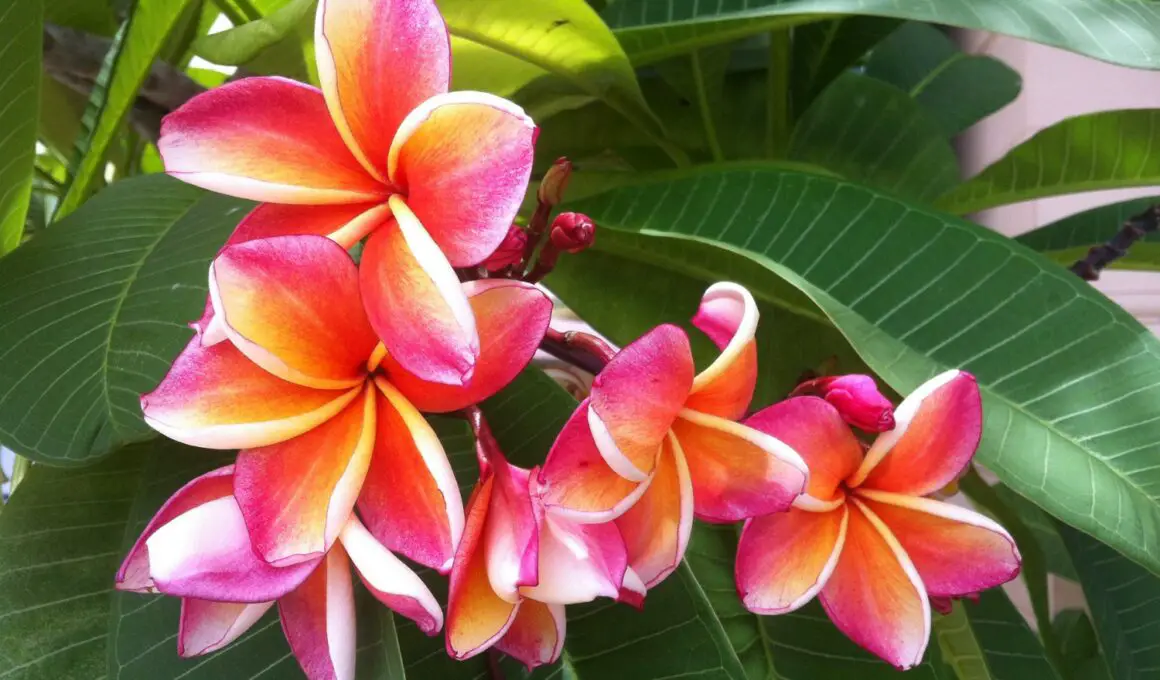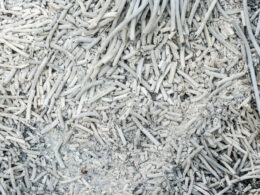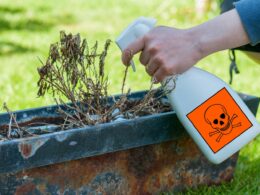In This Article Show
FAST FACTS
- Stem rot is a disease that is often caused by fungi infection, while dehydration is a condition that occurs when the plant doesn’t get enough water or nutrients.
- You can identify Stem rot by soft, mushy, and discolored stems. However, dehydration is identified by droopy and wilted leaves, dry soil, and a lack of new growth.
- Changing soil that may be contaminated with the fungus can help save your plant from root rot; however, watering your plant well can help your plant from dehydration.
As plant lovers, we understand the pain of seeing your beloved plants suffer. One of the most common issues plumeria plant owners face is stem rot and dehydration.
It can be tough to distinguish between the two, but it’s essential to identify the problem accurately to treat it effectively. This article will discuss how to identify plumeria stem rot vs. dehydration, the causes, and prevention tips.
Introduction To Plumeria Stem Rot And Dehydration
Plumeria is a beautiful tropical plant popular for its gorgeous flowers and sweet fragrance. However, this plant is prone to various diseases, including stem rot and dehydration.
Stem rot is a disease often caused by fungi infection and affects the plumeria plant’s stem, causing it to become soft, mushy, and discolored. The fungus enters the plant through wounds, cuts, or breaks in the branch and causes the tissue to rot. If left untreated, it can spread to other parts of the plant, eventually killing it.
Dehydration, on the other hand, is a condition that occurs when the plant doesn’t get enough water or nutrients, causing the leaves to wilt and droop. It can be caused by under-watering, over-fertilization, or poor soil quality.
Get Gardening For Beginners
Our new EBOOK shows newcomers and green thumbs alike a step by step guide to growing the garden of their dreams.
Understanding The Signs And Symptoms Of Plumeria Stem Rot And Dehydration
It’s essential to understand the signs and symptoms of plumeria stem rot and dehydration to diagnose the problem accurately.
Symptoms Of Stem-Rot
- Soft, mushy, and discolored stems.
- The leaves may also turn yellow, and the plant may wilt.
- In severe cases, the stem may break off entirely.
- Black spots, especially on mature plumeria plants.
- Plumeria cutting may begin to turn brown at the cut end or base.
- The cutting may show a brown or black hollow on the inside.
Symptoms Of Plumeria Dehydration
- Droopy and wilted leaves, dry soil, and a lack of new growth.
- The leaves may also turn yellow or brown.
- New growth in plumeria may be slow and bring up small leaves.
- The tip of the leaves may begin to look dry and dead. The leaves are usually droopy and wilted.
- The soil bed of the plant will look very dry.
Causes Of Plumeria Stem Rot And Dehydration
Several factors can cause stem rot in plumeria; they are as follows;
1. Overwatering
Overwatering is one of the major causes of stem rot in plumeria plants. When the soil of a plant is overwatered, it hinders the plant from accessing enough oxygen, this invariable causes the plant to begin to rot.
Overwatering, apart from causing the plant to rot, can also lead to fungus infection, making the stew change color to yellow.
2. Poor Drainage
Phomopsis and phytophthora are two stem-rot-causing fungi, these two thrive best in plants that are damp and have poor drainage systems. They damage the stem of the plants and ultimately damage the entire plant if not taken care of.
3. Age
Newly plated plumeria as well as old plumeria plants, are susceptible to stem rot. Other stages of growth such as vegetative or flowering season, can also put the plant in a state of susceptibility to stem rot. You should pay attention to your plants at every growth stage. You also give your plumeria plant extra care while it is newly planted or old.
4. Poor Growing Condition
Mistreatment of the plumeria plant can cause stem rot. Too cool temperatures, little light, too dry, or being a cold temperature can cause the plant’s stem to rot.
Get Gardening For Beginners
Our new EBOOK shows newcomers and green thumbs alike a step by step guide to growing the garden of their dreams.
5. Pest And Diseases
Pests can find their way to dig a route to the plant’s stem, opening up the stem to fungi infections. Diseases such as Pythium, Rhizoctonia, and Fusarium cause rot infection in plants.
Causes Of Dehydration In Plumeria
The following are causes of dehydration in plumeria;
1. Under Watering
Underwatering is one of the major causes of dehydration. It causes the plant to dry out and also hinders it from getting and distributing the right nutrients from the soil. As a result of the lack of nutrients, the plant loses its rigidity from the tissues and cells.
2. Over-fertilization
While the right amount of fertilizers can help the plant grow, over-fertilization can cause the plant to develop many issues, including dehydration. Excessive fertilizers result in excessive salts in the plants. This can reverse the water flow and cause dehydration for the plumeria plant.
3. Poor Soil Quality
Like every other plant, plumeria grows best in certain types of soil. Providing anything short of that can affect the plant and cause it to be dehydrated. We recommend you consult a professional to determine what plant is best for your plumeria.
How To Fix Plumeria Stem Rot And Dehydration
If your plumeria plant has stem rot, you must act quickly to save it.
Stem Rot
- The first step is to remove the affected parts of the plant, including the stem and leaves. You should also remove any soil that may be contaminated with the fungus.
- Then, you’ll need to apply a fungicide to the remaining parts of the plant to prevent the fungus from spreading.
Dehydration
- For dehydration, the first step is to water the plant and ensure it gets enough nutrients thoroughly.
- You should also improve the soil quality and reduce the fertilizer you use.
Prevention Tips For Plumeria Stem Rot And Dehydration
Prevention is always better than cure, and there are several things you can do to prevent plumeria stem rot and dehydration.
- First, ensure that the plant gets enough water and nutrients.
- You should also avoid over-watering or under-watering the plant and ensure adequate drainage.
- It’s also essential to keep the plant in a well-ventilated area and avoid overcrowding.
- Finally, you should regularly inspect the plant for any signs of disease or pests and take action immediately.
Plumeria Stem Rot Treatment Options
Several treatment options for plumeria stem rot include fungicides, pruning, and soil sterilization.
- Fungicides can effectively prevent the fungus from spreading, while pruning can remove the affected parts of the plant.
- Soil sterilization involves removing the contaminated soil and replacing it with fresh soil.
Final Thoughts
Plumeria plants are beautiful and fragrant but also prone to various diseases. Stem rot and dehydration are two of the most common issues that plumeria plant owners face. Understanding the signs and symptoms of these conditions is essential to diagnose the problem accurately.
If you act quickly and take the necessary steps, you can save your plumeria plant from dying. Remember to take care of your plant by providing enough water and nutrients, improving soil quality, and regularly inspecting it for any signs of disease or pests.
If you have any questions or concerns about your plumeria plant’s health, don’t hesitate to contact a professional for help.










